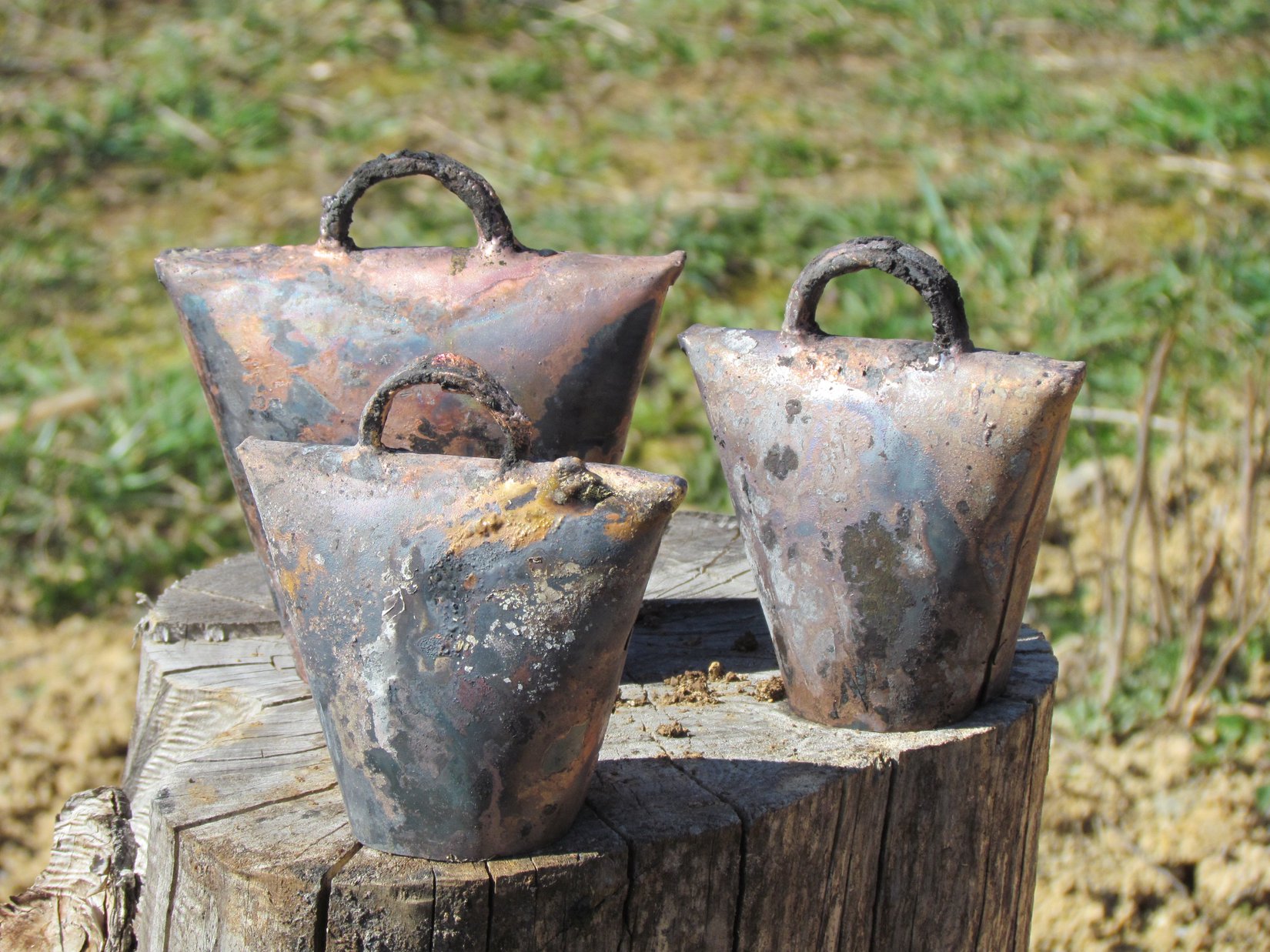
Jelšava bell producers
Bell-production was a craft linked to sheep and cattle breeding. Some blacksmiths and, during the winter season, skilled shepherds devoted themselves to it.
In individual regions of Slovakia, the production of bells was organized in a more modest form. The craftsman worked independently and found an outlet for his products in the immediate vicinity. Mass production was expanded only in Jelšava, which was the most important center of bell-making in the whole of Hungary.
In the oldest Jelšava town book, records of bell ringers can be found as early as the 16th century. During the 17th and 18th centuries, the number of craftsmen and bell ringers in Jelšava grew. In the 19th century, an incredible forty workshops operated here today. In 1892, 26 masters founded the Zvonkárské zivnostenské družstvo, whose products were highly valued for their melodious tones and fine tuning and were shipped not only throughout Hungary, but also throughout Europe, some parts of Asia, Turkey, and Egypt. Special bells were made for the French, the so-called Parisbells, which were used by the fiacres driving in the metropolis of France. You can find such a bell today in the collection of Mr. Mikuláš Gigac from Šumiac. Mr. Michal Molčan from Rejdová owns a collection of bells in Gemer.
In Jelšava, production was distinguished from other bell makers in Hungary by a unique work organization. It was based on a hierarchy of masters, journeymen, apprentices and helpers and on the division of labor between them. Production was thus more specialized, which corresponded to a wider assortment of bells. Up to 90 types of tin bells in 10 to 12 sizes are known.
Mostly, it was always a matter of custom-made production, as the bačs, who made up the majority of the customers, had special requirements for bells. Differences also existed depending on the place of breeding. In the lowlands, the Bačas gave herds bells in different tunings, but only for 10 to 15 animals. Those who led the herd or were the most lively. The more lively ones were even given harder bells to calm down faster. On the contrary, in the mountains, due to the ruggedness of the terrain and the higher probability of losing an animal, a bell was put on each animal in the herd and in the same tuning, to distinguish them from animals from neighboring salas.
Even in mountainous Liptov, bells from the Jelšava bell ringers were the most popular. So-called knockers. According to their size, they were divided into knockers, half knockers, knockers and quarter knockers. The effort of each bachu was to have all the bells in the herd tuned to one voice, colloquially speaking "dobandy".
Even at the beginning of the 20th century, Jelšava bells were valued so highly that sometimes the value of one bell equaled the value of a sheep.
Jelšava bell ringing ceased in 1967, with the death of Mr. Ľudovít Kenyereš. He was the last active bell ringer, known among shepherds throughout Slovakia. It is said that when shepherds wrote Zvonkár Jelšava on their order, the mail was guaranteed to be delivered. He was a master in the control of production technology and had an absolute musical ear, which was a necessary prerequisite for the correct and high-quality tuning of the bells. The equipment of the last bell maker's workshop was saved by the Slovak Technical Museum in Košice.
Today in Gemer, the bell maker Jaroslav Bastyúr from Silica is engaged in the production of forged tin bells. The tradition of bell ringing in his family was started by his grandfather Ľudovít Bastyúr, who learned from the last master Kenyeres. He passed the craft on to his son Vojtech, Mr. Jaroslav´s father, and his father to him. It fires from the outside as it was done 400 years ago.
Jaroslav Majba from Ochtina is also trying to preserve the tradition of our ancestors, who makes cast bells and bells.